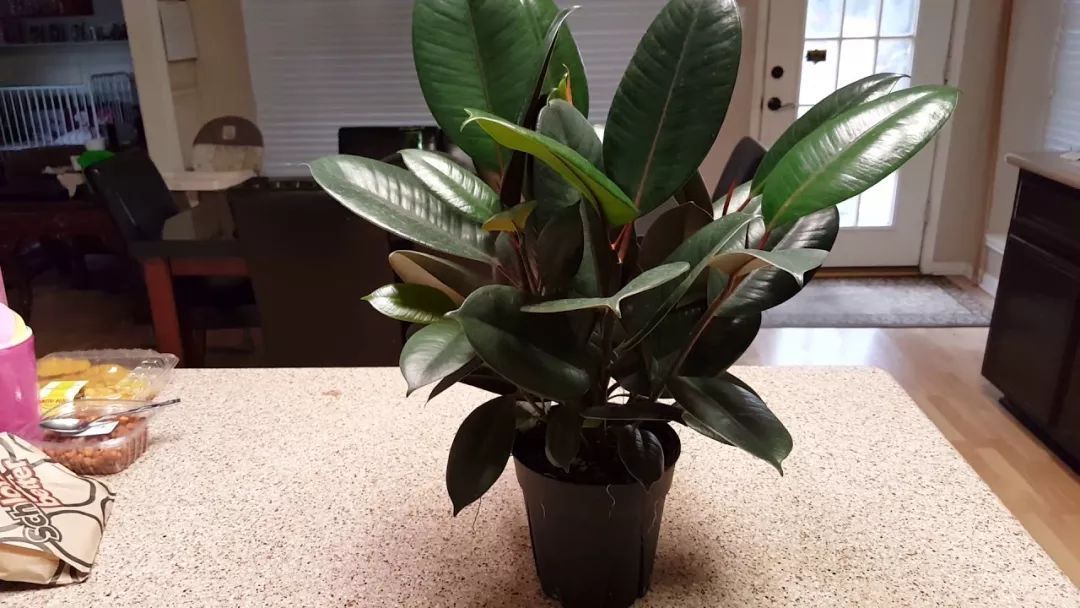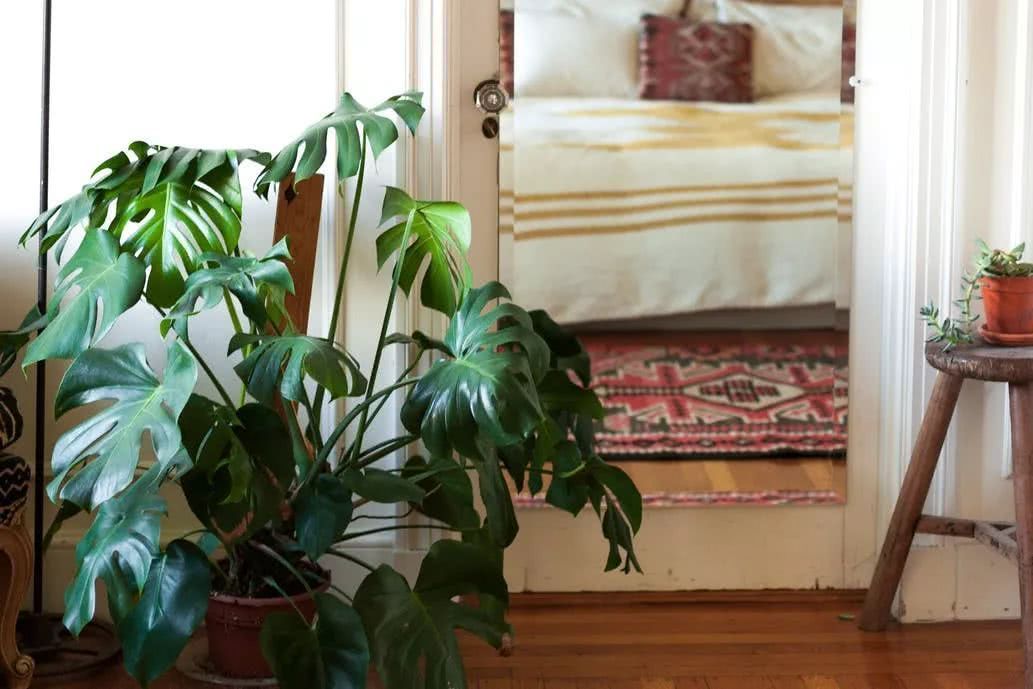A rubber tree that does not need to be managed can grow upward by the windowsill.

If you want to raise some plants with big leaves, but don't want to take care of them often, how many kinds of plants can you think of? The common Daqin leaf banyan, tiger skin orchid and silver queen are very similar competitors, but do not ignore the low-key and solemn rubber tree, it also has many varieties, let's take a look.
The above is the most common rubber tree with green leaves.
1. The environment for conservation
Rubber tree also belongs to a kind of banyan tree, it is a medium-sized indoor plant, it is easy to become the focus of indoor, its ornamental is very good, it can well adapt to the indoor environment, in the sun or semi-shade can grow.
Rubber trees grow very quickly in an outdoor environment, especially in a warm and humid environment all the year round, and their growth slows down if they are raised indoors, because flowerpots limit their growth.
2. pay attention to soil selection.
Rubber trees are afraid of stagnant water in the soil, so they must choose sandy soil that is well drained and breathable. Peat soil, pine bark and perlite can be selected and mixed at 1:1:1.
The soil must be mixed with appropriate river sand or perlite to maintain good drainage, and it is also a good choice to add some pine bark properly. The bottom of the flowerpot can be covered with a layer of 3 cm thick compost soil or mature manure.
3. Lighting demand
If you want to promote the growth of rubber trees, be sure to give them as much light as possible, avoid keeping them in over-shaded places, and avoid direct light or exposure when the summer temperature is high.
You can keep the rubber tree by the windowsill facing south or east, with more scattered light every day, so that the leaves can grow. If they are raised in the dark, the leaves will lose their luster, and the leaves at the bottom will easily fall off.
The above is the rubber tree with macula. its veins are red and there are irregular yellow markings on the leaves. Don't think it's a pathological change.
4. Watering and fertilization
The watering of rubber trees is different because of the difference with the environment. In the spring and summer growing season, it is necessary to keep the soil moist. You can spray water around you regularly to maintain a certain amount of air humidity and promote good growth. After the weather gets cold at the end of autumn, you only need to water it once or twice a month.
If you find that the leaves of the rubber tree begin to droop, it proves that it needs more moisture, and if the leaves turn yellow and brown, it proves that it is overwatered.
If the air is dry, you spray water around you. Otherwise, the leaves are easy to dry, especially in winter, rubber trees are easy to dry up indoors, and can be sprayed around with warm water directly in winter.
Be careful not to use tap water directly when watering, it can be reused for two or three days, otherwise the chlorine in tap water will cause the soil to be alkaline and it is easy to cause rubber tree leaves to turn yellow.
Rubber trees are fertilized only in late spring or summer, and should be avoided in other seasons, usually once every 3 to 4 weeks.
5. Pruning skills
The rubber tree does not need too much pruning, just cut off some withered or yellowed leaves. If you want the rubber tree to grow into a beautiful shape, you can pinch off the buds at the top of the rubber tree when it reaches a certain height, so that it can grow new branches. Can also maintain a good shape, the best time for pruning is in spring and summer.
6. Propagate rubber trees
There are many people do not know how rubber trees reproduce, in fact, as long as a section of branches of rubber trees, cutting into the soil can take root and sprout, cut branches about 9 to 12 centimeters long
The leaves at the bottom of the branches should be removed from the top, leaving about 2 to 3 leaves is enough. the bottom notch oblique shear soaks the rooting solution and then cuttings into the soil after 30 minutes. Peat soil can be used with perlite cuttings, mixed at the ratio of 1:1. In the process of cutting propagation, to maintain humidity and temperature, the soil should be kept moist to avoid drying.
7. Differences between indoor and outdoor maintenance
Rubber tree is a tropical foliage plant. To avoid freezing during maintenance, the minimum maintenance temperature should be kept above five degrees. If it is an outdoor rubber tree, if the temperature drops to about ten degrees, it will be moved indoors. Only where there is no frost all the year round can the rubber tree be raised outdoors.
- Prev

Nine kinds of fresh indoor potted ornamental plants are suitable for modern home.
If you want to match some plants indoors to make your home look warmer, here are some ideas that can help you. They can not only purify the indoor air, but also decorate the home, making the whole space look fresh and natural. ...
- Next

The maintenance of tortoise back bamboo only needs to pay attention to five skills. Flowerpots can also continue to grow and reproduce.
The iconic cracked leaves of the tortoise-backed bamboo are very beautiful and are often used in art or flower arrangement designs, as well as as a separate display. Turtle back bamboo can be raised for many years, with different containers, but also can form different styles, but you.
Related
- Wuhan Hospital Iron Tree Blooming Result Was Instantly Frightened by the Gardener Master
- Which variety of camellia is the most fragrant and best? Which one do you like best?
- What is the small blue coat, the breeding methods and matters needing attention of the succulent plant
- Dormancy time and maintenance management of succulent plants during dormancy
- Minas succulent how to raise, Minas succulent plant pictures
- What are the varieties of winter succulent plants
- How to raise succulent plants in twelve rolls? let's take a look at some experience of breeding twelve rolls.
- Attention should be paid to water control for succulent plants during dormant period (winter and summer)
- Watering experience of twelve rolls of succulent plants
- Techniques for fertilizing succulent plants. An article will let you know how to fertilize succulent plants.

